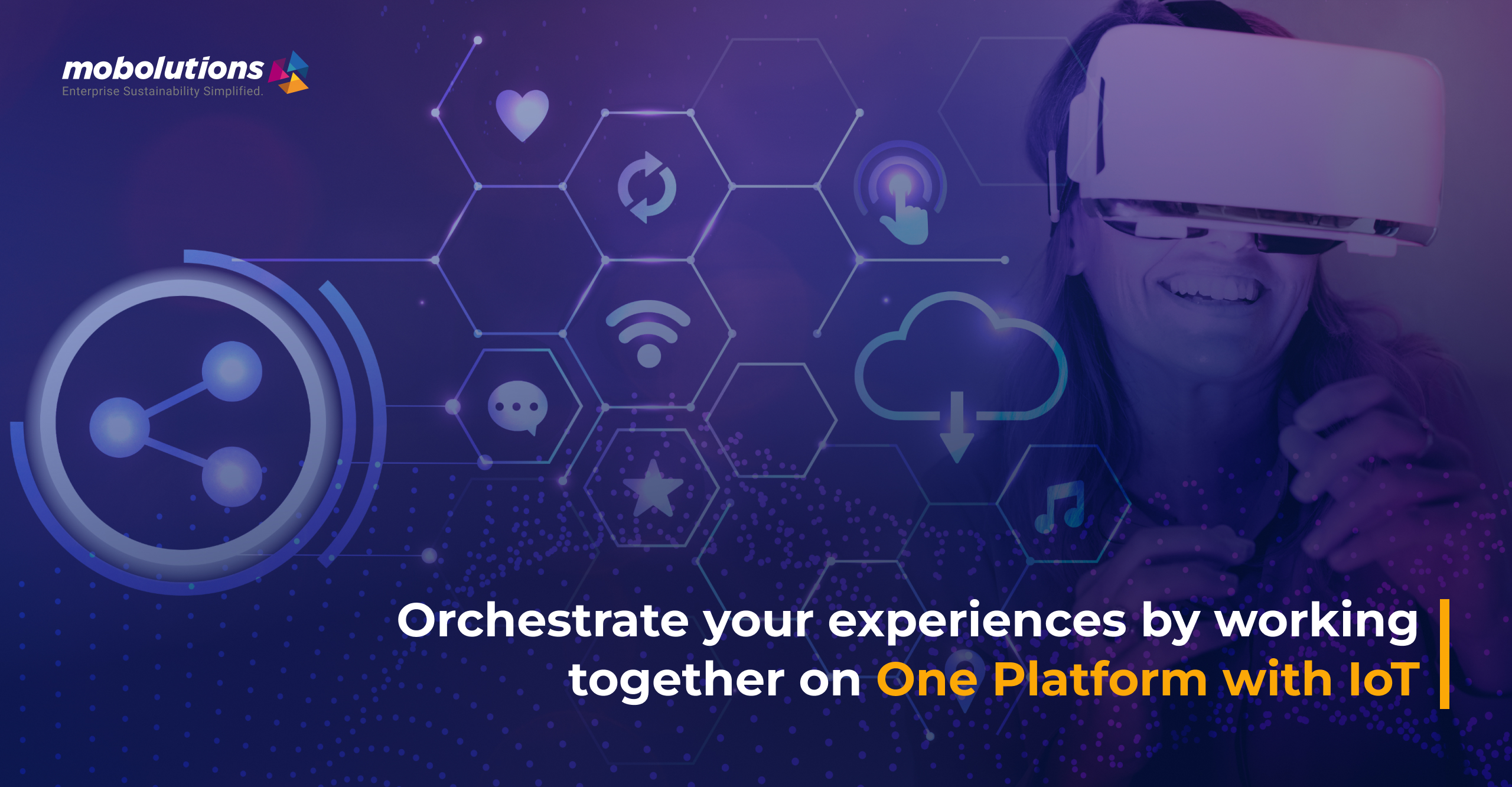Orchestrate your experiences by working together on one platform with IoT
In a digital world where more systems and processes are becoming interconnected, we can see the Internet of Things drill apart the communication barriers in our homes, workplace, and work sites, among field service companies. Because of the personal, professional, and industry-specific IoT benefits for businesses that come with devices capable of talking and interacting with each other, IoT has been scaling up and is predicted to be a predominant technology in coming years creating lot of insight.

Today, the number of IoT devices all over the globe has reached over 23 billion and it is expected to cross 75 billion by 2025.
Many of today’s IoT devices are end-user technology but with upgraded advancement in asset management (through platforms like SAP), that’s changing. The main advantages of IoT devices are that they can capture data using sensors from any environment. In enterprise, the application of IoT is a lot more potential and provides valuable insights in into the effective running and controlling of the business events.
Right now, there are various devices operating outside of specification. If it were closely looked into, the indicators would likely be visible to a trained technician. Of those devices, you can guarantee that some of them are operating close to danger.
Something may go out of schedule, the machine might shut down, production and workflow may come to a halt. These bottlenecks can be resolved with the advantages of the IoT platform. The main advantages of IoT devices are it is cheap, consumes little energy, are easily configurable, and are reliable.
Bottlenecks, are likely to happen and that’s why IoT devices and their features are gaining popularity. Among interconnect machines, virtually any system with sensors and the feature to communicate can be programmed as part of a network to monitor itself. Through self-monitoring, it can be automated to respond to changes in its environment whether that’s adjusting according to programmed responses or signaling for human interaction.
This is what asset management looked like yesterday and even today for many industrial manufacturers:
- Untrusted and disparate asset data
- Limited analytics and data capabilities
- Reactive maintenance with the concept of fixing it when it breaks
- Reduced life cycles that force replacement with new equipment more often
- Maintenance schedule based on budgets and not assets
- Physical media for documentation, instructions, and workflows
That’s the industrial sector we’ve come to know in recent years where we need innovation. Is that the desired place where you want your business to stay (without IoT benefits)?
Not when it’s obvious how digital asset management can significantly alter Industrial Processes:
- Access to huge volumes of operational data that can be pulled in near real-time with simulations
- Collaboration across various networks in professional’s field workers, at the manufacturer, vendor, etc. for extraction of a single source of information
- Longer product life cycles by focusing on the exact changes for predictive and prescriptive maintenance
- An effective maintenance approach that is constructed extensively with real-time factors like cost, risk, and performance – this way it should make maintenance strategy clearer and more effective.
All the points to a predictive maintenance model, using sensors and connectivity to provide the right data at the right time, so decisions can be made to reduce expensive bottlenecks. The Internet of Things is directing all industries to increase the use of on-condition and predictive maintenance strategies.
It is still applicable for many areas of the manufacturing, distribution, assembly, service industries for predicting the maintenance activities to ensure the proper operation of the equipment through IoT integration and thereby reducing unplanned downtime and unwanted repair operations.
By connecting the end devices and equipment’s in the industries, the visualization of industrial machines in a virtual environment happens and based on that more advanced maintenance strategies can be planned. By analysing the data, proper models can be created for maintenance tasks and reduce operational costs considerably.

Benefits of IoT:
- Increase Operational Availability of Equipment:
- Work More Efficiently with Fewer Personnel:
- Capture Data More Accurately
- Real-time data analysis
- Increased visibility and proactive decision-making with IoT benefit for business and personal products.
In Asset intelligence networks inside SAP, we can incorporate IoT to pull the real-time data to the SAP ecosystem to analyze the real-time data and get the actual insights to predict the happenings and to make necessary decisions.
Whenever IoT Data is concerned with the analysis of the usable components, it is extremely hard to handle large volume of data to extract the useful components from the data. Since multiple sensors, machines, and other control systems run every day and store the data In the IoT servers, the vast collection of the data contains very less useful information in it compared to the actual data contained in it. It becomes complex to handle vast amount of data with a traditional server. But with IoT, we can store, retrieve, and analyze the data with increased speed and capability because the IoT stores and indexes the data as time series data which allows faster execution. Analyzing the equipment/assets in a company will start increasing the visibility and start optimizing the process and spots the troubles happenings in it. This gives a full-scale solution for the issues happening and plans accordingly for maintenance and service solutions in place with a strategy for acting.
The major benefit of IoT in business is that we can avoid unplanned downtimes by applying proactive Predictive maintenance by analyzing the IoT data. The main benefits of IoT Predictive maintenance with help of an asset intelligence network truly add value by saving.
FAQ:
- What are the risk factors in IoT?
- Communication channel security
- Personal data privacy
- Managing the secure firmware updates
- What are the protocols used in IoT?
- Bluetooth
- LoRa WAN
- GSM/GPRS
- Zigbee
- MQTT
- HTT
- DEV0090282669_0000000.PAT.



